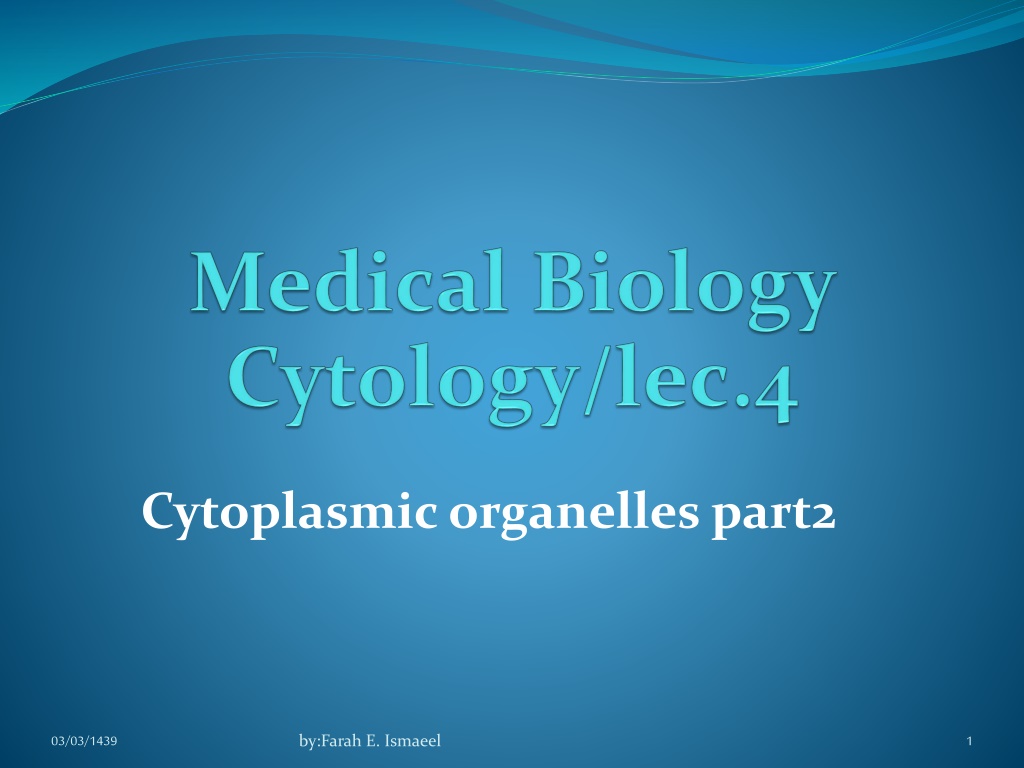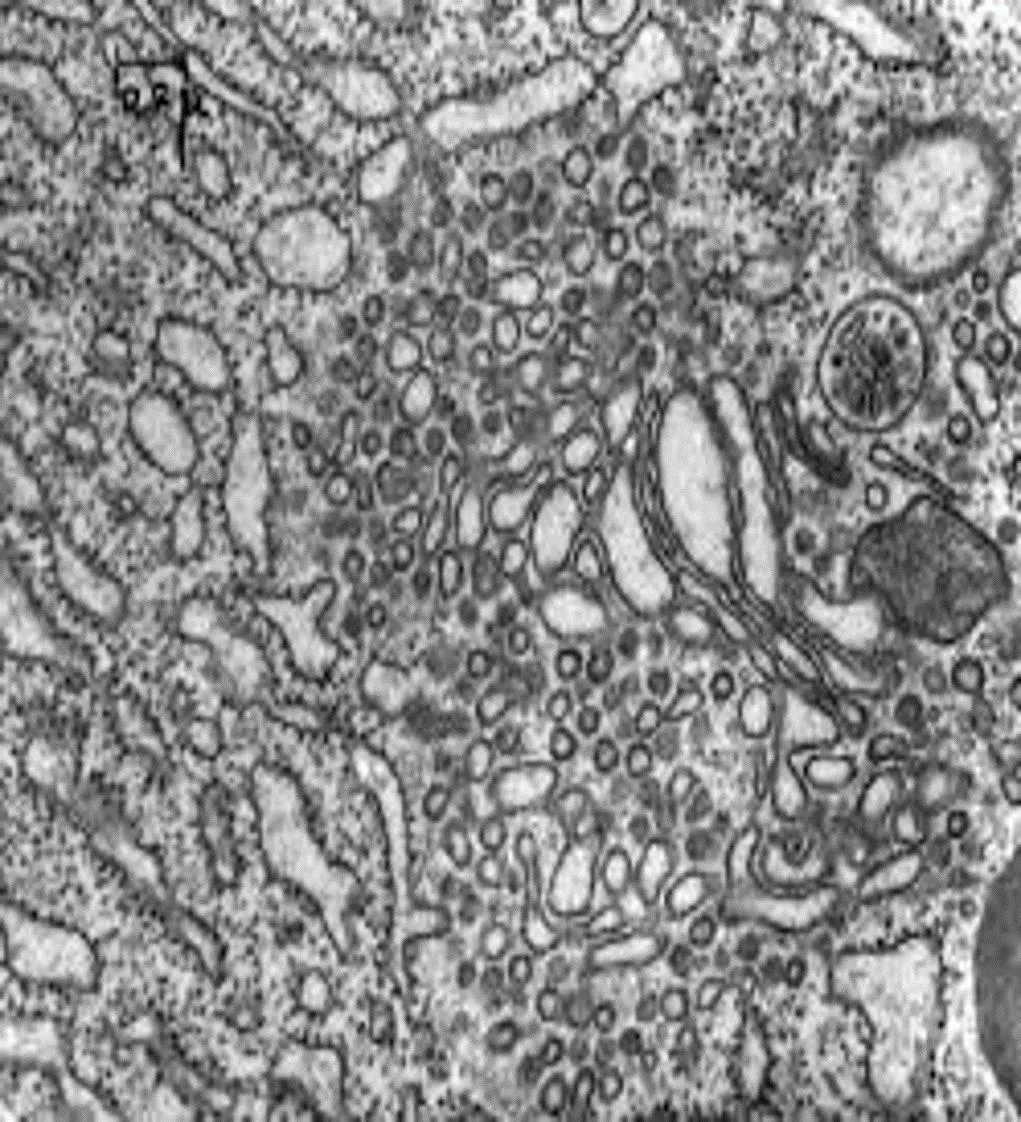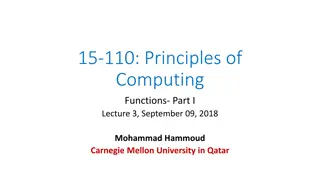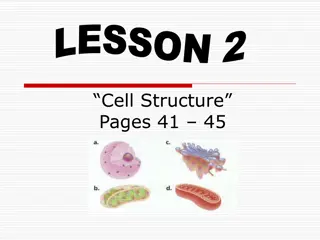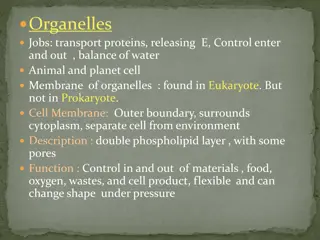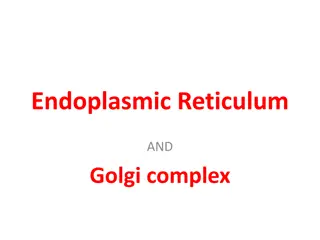Functions and Medical Applications of Smooth Endoplasmic Reticulum (SER)
Smooth Endoplasmic Reticulum (SER) is a vital organelle involved in various cellular functions such as synthesizing phospholipids, detoxifying drugs, producing hormones, and aiding in lipid metabolism. Its role in processing bilirubin helps prevent jaundice, with implications for newborn health. The SER's impact extends across different cell types, highlighting its versatile nature in cellular processes.
Download Presentation

Please find below an Image/Link to download the presentation.
The content on the website is provided AS IS for your information and personal use only. It may not be sold, licensed, or shared on other websites without obtaining consent from the author. Download presentation by click this link. If you encounter any issues during the download, it is possible that the publisher has removed the file from their server.
E N D
Presentation Transcript
Cytoplasmicorganelles part2 03/03/1439 1 by:Farah E. Ismaeel
Smooth ER (SER) SER continuous with RER, does not have attached ribosomes. Smooth ER synthesizes the phospholipids that occur in membranes and has various other functions 01/03/1439 2 Farah E. Ismaeel
other functions of SER depending on the particular cell. 1. SER in Testes is produce testosterone. 2. SER in liver is detoxified drugs, alcohol and toxin. Also have role in lipid and cholesterol synthesis. And glycogen breakdown. 3. SER in adrenal glands is produces steroid hormones 4. SER in muscle cells has role in contraction process (SER in muscle cells called sarcoplasmic reticulum). 5. SER Transport molecules to the Golgi body. 6. SER is metabolized lipid and cholesterol. 01/03/1439 3 Farah E. Ismaeel
MEDICAL APPLICATION ON SER Jaundice denotes discoloration of the skin and is caused by accumulation in extracellular fluid of bilirubin and other pigmented compounds, which metabolized by SER enzymes (UGT)in cells of the liverand excreted as bile. a yellowish are normally 01/03/1439 4 Farah E. Ismaeel
03/03/1439 5 by:Farah E. Ismaeel
A frequent cause of jaundice in newborn infants is an under developed state of SER in liver cells, with failure of bilirubin to be converted to a form that can be readily excreted. 03/03/1439 6 by:Farah E. Ismaeel
01/03/1439 7 Farah E. Ismaeel
Golgi apparatus Golgi apparatus is consists of a stack of slightly curved saccules with convex side as the cis face and mature concave side is the trans face that separated from ER. Present in typical eukaryotic cells, highly developed in secretary cells. In most cells, there is a polarity in the Golgi bodies.(most polar organelle) 01/03/1439 8 Farah E. Ismaeel
Protein and lipid vesicle from ER fused with cis face of Golgi apparatus then subsequently progress through the stack to trans face of Golgi apparatus that contain cisternae enzyme. Cisternae enzyme modify, sort and package proteins also add sugar to protein and lipid to form glycoproteins, glycolipids and lipoproteins. These molecules packaged in membrane for export outside of cell or for lysosomes. 01/03/1439 9 Farah E. Ismaeel
01/03/1439 10 Farah E. Ismaeel
Lysosomes Lysosomes are membrane bounded organelles that contain about 40 different hydrolytic enzymes produced by the Golgi apparatus. Lysosomal hydrolases are synthesized and segregated in the RER and then transferred to the Golgi apparatus, where the enzymes are further modified and packaged in vacuoles that form lysosomes. 01/03/1439 11 Farah E. Ismaeel
Lysosomes Particularly abundant in cells with great phagocyticactivity (eg, macrophages, neutrophils) because it digest any foreign substance by hydrolytic enzyme. Have important role in post mortum autolysis. Maintain cell health by remove all old endogenous macromolecules. 01/03/1439 12 Farah E. Ismaeel
03/03/1439 13 by:Farah E. Ismaeel
01/03/1439 14 Farah E. Ismaeel
AUTOPHAGY 01/03/1439 15 Farah E. Ismaeel
Diseases categorized as lysosomal storage disorders (LSDs) stem from defects in one or more of the digestive enzymes present in lysosomes . In cells that must digest the substrate of the missing or defective enzyme following autophagocytosis, the lysosomes cannot function properly. Such cells accumulate large secondary lysosomes or residual bodies filled with the indigestible macromolecule. The accumulation of these vacuoles may eventually interfere with normal cell or tissue function, producing symptoms of the disease. 01/03/1439 16 Farah E. Ismaeel
Mitochondria Mitochondria (singular, mitochondrion) are membrane- bounded organelles They are usually elongated structures. They are highly plastic, rapidly changing shape, fusing with one another and dividing, and are moved through the cytoplasm along microtubules. 03/03/1439 17 by:Farah E. Ismaeel
03/03/1439 18 by:Farah E. Ismaeel
Mitochondria The numberof mitochondria in the cell is related to the cell s energy needs: 1. cells with a high-energy metabolism (eg, cardiac muscle, liver cells and cells of some kidney tubules) have abundant mitochondria 2. cells with a low-energy metabolism have few mitochondria such as small lymphocyte 03/03/1439 19 by:Farah E. Ismaeel
Mitochondria Mitochondria powerhouses of the cell. Just as a powerhouse burns fuel to produce mitochondria convert the chemical energy of glucose products into the chemical energy of ATP molecules. In the process, mitochondria use up oxygen and give off carbon dioxide. Therefore, the process of producing ATP is called cellularrespiration. are often called the electricity, the 03/03/1439 20 by:Farah E. Ismaeel
The structure of mitochondria each mitochondrion consists of : Outer membrane: is smooth membrane surrounded that allows entry of molecules and contain enzyme involved in mitochondrial lipid synthesis. 2. Intermembranespace: Because of channels in the outer membraneof the mitochondria, the content of the intermembrane space is similar to that of the content of the cytoplasm. 1. 03/03/1439 21 by:Farah E. Ismaeel
The structure of mitochondria 3. Inner membrane: exhibit numerous folds called cristae which maximize internal surface area of mitochondria and contain most of the respiratory chain enzymes and ATP synthase which is responsible for cell respiration (oxidative phosphorylation) and production of cell ATP. Shape of cristea different according type of cells; in protein secreting cells cristea project into the interior of the organelle like shelve. In steroid secreting cells such as the adrenal cortex or interstitial cells in the testes, the mitochondria cristea are tubular. 03/03/1439 22 by:Farah E. Ismaeel
The structure of mitochondria 4. Mitochondrial matrix: the matrix is the space within the inner membrane; contain enzymes for Krebs cycle, mitochondrial DNA (circular DNA), special ribosome, tRNaseand enzymes for gene expression. Mitochondrial DNA is double stranded and has a circular structure very similar to bacterial chromosomes, mitochondrial DNA synthesis and duplication is independent of nuclear DNA replication. Mitochondrial ribosome is smaller than cytosolic ribosome. tRNases are enzymes that degraded the tRNA. 03/03/1439 23 by:Farah E. Ismaeel
03/03/1439 24 by:Farah E. Ismaeel
Mitochondria disorders A maternally-inherited mutation in the mitochondrial genome defective synthesis of respiratory chain proteins which can abnormal in muscle fibers specially skeletal muscle fibers are mitochondrial defect dysfunction) and other cells. (This called mitochondrial disorders) is leading to produce structural very sensitive (muscular to 03/03/1439 25 by:Farah E. Ismaeel
Replication of mitochondria Mitochondria replicate similarly to bacterial cells, when they get large, they undergo fission. This involves furrowing of the inner and then the outer membrane as if someone was pinching the mitochondrion. The two daughter cells of the mitochondria must first replicate the DNA. 03/03/1439 26 by:Farah E. Ismaeel
Function of mitochondria Mitochondria are primary sites for ATP synthesis (site of Krebs cycle) from organic material so that known as powerhouse of the cell. 2. Cell respiration. 3. Maintain body heat because some energy dissipated as heat. 4. They have key role in apoptosis programmed cell death. 5. Some mitochondrial functions are performed only in specific types of cells, e.g. mitochondria in liver cells contain enzymes that allow them to detoxify ammonia, a waste product of protein metabolism. 1. 03/03/1439 27 by:Farah E. Ismaeel
03/03/1439 28 by:Farah E. Ismaeel
